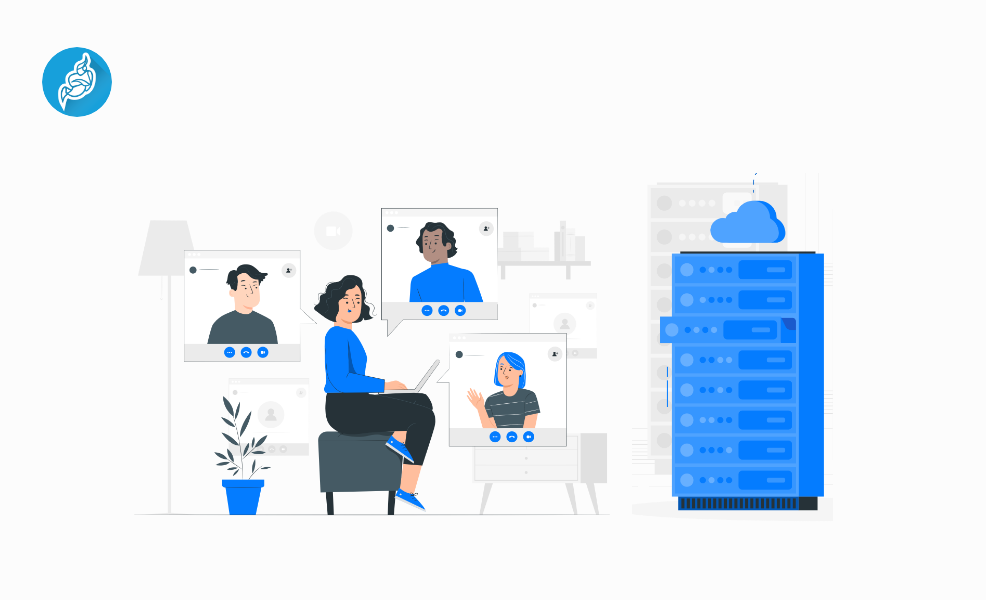

I’m sorry for Windows users, I won’t cover how to connect to your instance through SSH here. To do so, type elastic ips in the search bar of the console, and select the first item of the Features section (the only item which is exactly named Elastic IPs). In order to avoid this, we need to allocate IP addresses to our machines. This is an issue because everytime you reboot a machine, its public IP address will change by default. You also may want to reset everything and recreate some instance from scratch. When using your server you ~may~ will reboot them sometimes.
#Jitsi on aws registration#
But you will need the registration process to be completed before going to the Next section (Jitsi).
#Jitsi on aws free#
Once registration process is completed, you may have to validate your email address, and domain validation may take some time (it depends on the domain name extension that you chose).įeel free to continue the next steps of DNS section before the end of registration. On the confirmation screen, just accept the terms and conditions and click on Complete Order. Just type Route 53 in the search bar of the console, and choose the Route 53 option.įill in the form and click on the Continue button at the bottom of the form. In order to do so, we will need to use Route 53 service of AWS. That’s all you need to know DNS Domain registrationįirst, you will need a domain name to run your servers. Prerequisiteįor this tutorial, we will assume that you are able to connect to the AWS console. That is the configuration we will achieve here. In order to solve this issue, everytime a video have been recorded, it needs to be saved in a not referenced video on YouTube.

Of course, if the server is stopped, it means that the recordings are not accessible anymore. So the Jibri server should start when a conference starts, and should stop when we both have no conference running and no operation to do. My personal use case is pretty simple: I’m doing only one to one conferences, and there is never more than one conference at a time. As it will be expensive, I want this server to run only when needed, and to switch it down when we don’t need it. So the cost of that server will be less than $5.īut Jibri has to run on powerful servers, which means expensive one. It’s easy to run Jitsi on a very small unexpensive server.

One server for Jibri, which will be running on demand.One server for Jitsi, which will be running 24 hours a day.In this architecture, we will have two servers : So it is very important to think about the architecture and about the solution you want before starting. Running a server in the cloud will cost you money. I just applied a lot of things which are specific to AWS on top of it (like How to change default kernel in Ubuntu (AWS) (Jibri)), and also applied the Jibri configuration migration guide. I relied a lot on How-to to setup integrated Jitsi and Jibri for dummies, my comprehensive tutorial for the beginner to write this guide. This will be a step by step installation, so you can stop whenever you want.

#Jitsi on aws full#
Full AWS means that everything will be done using AWS, including DNS configuration. Video calls, audio calls, screen share, mobile responsive browser support, chat, video/on off, mute/ unmute, moderator/ participant roles, lobby and nickname setting, meeting end page, JWT authentication/ PW enabled lobby, virtual backgrounds, unlimited hosted and much more.In this article, I will share a solution for using Jitsi and Jibri on a full AWS solution. This is a low cost, high performance server configuration by the industry leader in open source WebRTC services, meetrix.io. Jitsi server setup includes a single server which has Jitsi Meet and JVB installed, and another server with Jibri for a single concurrent meeting recording to AWS S3. This setup is bundled with an AWS Cloudwatch monitoring dashboard in addition to Jitsi components. There will be 02 JVB servers always running and will autoscale more JVBs on demand. Auto scaling reduces your infratructure bill by turning on servers only when there is a need for them. A fully tested and performance evaluated Jitsi setup that supports 500 concurrent users in multiple conferences with auto scaling JVB servers.


 0 kommentar(er)
0 kommentar(er)
